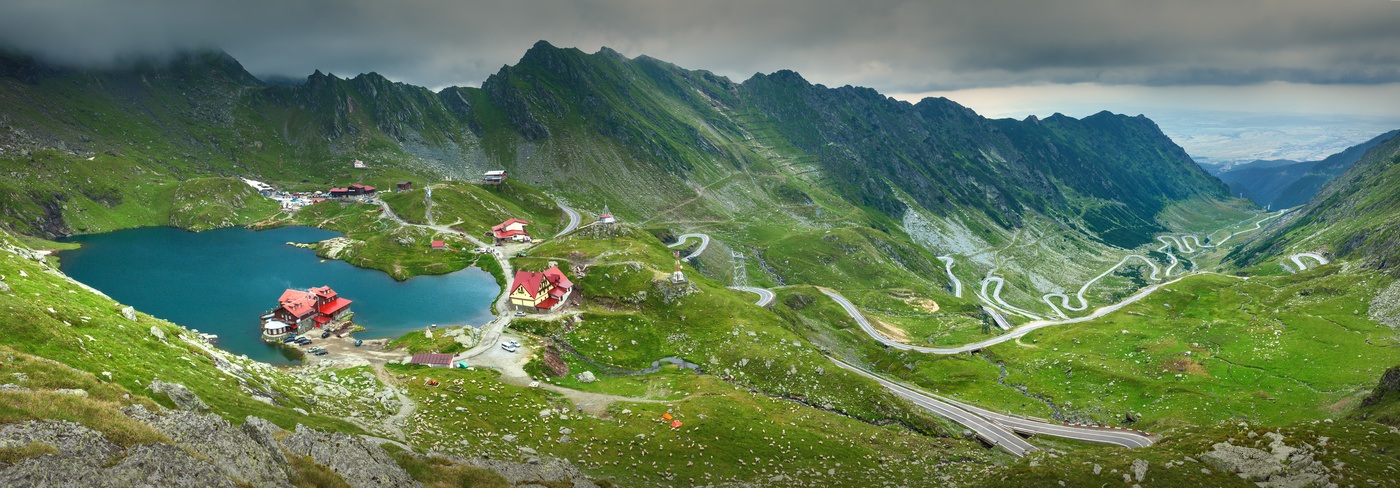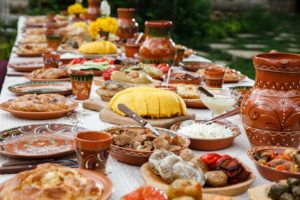When it comes to Romanian wine, Jancis Robinson calls my home country ‘the land of hope‘. But wine is not the first thing most people think of when you mention Romania.
Instead, an unholy trinity typically comes to mind:
- Dracula
- Ceaușescu
- Gymnast Nadia Comaneci
Romania is a Latin country, surrounded by Slavic neighbours in Eastern Europe. It is also one of the largest wine producers in the world with a growing number of high-quality wine makers.
At Vincarta, we’re champions of Romanian wine. We hope this article will change some perceptions.

Fact #1: Romanian wine is always improving
With the EU accession in 2007, Romania has embarked on a journey to put Romanian wine on the map. Access to pre and post accession funds translated to:
- investments in technology for wine making
- the removal of low-quality vines
- replanting vineyards with better genetic material.
The last ten years has seen the emergence of quality small Romanian wine producers. These have a completely different approach to wine making than the volume producers. As a result, we believe that premium Romanian wine is no longer an oxymoron.
That said, there is still a lot of low-quality, high-volume production. Eurostat reported that only one-third of Romanian vineyards used high quality grapes. This is the lowest in Europe.
This doesn’t surprise me, as the Romanians started improving quite late. But this has created an opportunity to use modern approaches to winemaking. This is reminiscent of how Romanian started using internet banking and mobiles phones. While other countries went though intermediary steps, Romania jumped in head first.
However, only fifty percent of Greek and Italian vineyards are dedicated to high quality production. But, this doesn’t stop them producing memorable wines.
Fact #2: Romania has the perfect geography for wine
The Carpathians Mountains are Romania’s greatest natural gift. A variety of soil compositions form in their foothills, which suit vines well. The mountains also give shelter to the hills, moderating the temperature – much like the Vosges mountains protect Alsace.
Romanian autumns are long and gentle, allowing grapes to ripen slower, concentrating flavours. Situated on the same latitude as Bordeaux, the climate is drier and more continental. The Black Sea does not have the same influence over Romania as the Atlantic Ocean does in Bordeaux. The hilly areas in Moldova and Dobrogea (by the Black Sea) also provide good conditions for grape growing.
The natural potential for the wine industry is clear and well-understood by investors. It’s no wonder British, German, Austrian, French and Italian companies dominate Romanian wine.
If the success of South American and Australian wine is anything to go by, we expect Romanian wine may be next.
Fact #3: Romanian wine production is the largest in Eastern Europe
OIV statistics place Romania fifth in Europe overall and tenth in the world for the area under vine. Based on 2016 data, with an area under vine of 191k hectares, Romania was similar in size to Chile and Portugal. Wine production that year was 3.3 million hectolitres, making Romania the fifth largest in Europe. At its current rate, Romanian wine production is slightly above New Zealand’s.
The Romanian wine-making industry suffered in the communist era. This was due to the prioritisation of quantity over quality. After the fall of communism, the country dealt with hyperinflation and hard economic times. Like the majority of Romanians, the wine industry suffered as a result. In this time, mass market wine – a.k.a. cheap plonk – made its way into the majority of exports. Romanian wine now has to battle its past reputation of low quality.

Thankfully, things are changing every year. Thanks to new producers and a greater consumer demand, Romanian wine is blossoming.
Fact #4: There’s a new generation of Romanian wine makers
In the last ten years, a new generation of winemakers, including Aurelia Visinescu, has broken onto the scene. These small, craft producers have taken advantage of EU funds to invest in new winemaking technology. They replant older vines with better quality clones.
They experiment with the winemaking style, taking a new world approach to the process. Some of them even hire oenologists from France and Germany to help them express the best of the terroir.
These niche producers dedicate a percentage of their produce to premium, high-quality wine. These wines feature the best grapes and have the highest care and attention. In response to the growing demand for quality wine, some of the well-established producers have started to make more premium wine.
Here at Vincarta, we want to draw attention to these quality producers. The list is not exhaustive but provides a good example of what to look for on the label. You can find most of them in the Dealu Mare sub-region. Think of this as the ‘Bordeaux’ of Romanian wine.
Look out for the following small producers in your next shop:
- Dealu Mare (Domeniile Săhăteni Lacerta, Davino, SERVE, Budureasca, Basilescu)
- Drăgăşani (Prince Știrbey)
- Drîncea (Crama Oprişor, Domeniile Segarcea)
- Dobrogea/Murfatlar (Alira)
We visited one of them in March 2017, Domeniile Săhăteni, and decided to bring four of their top wines to the UK market.
Fact #5: Premium Romanian wine is great value
The last five years saw the emergence of Romanian premium wine using international grape varieties. These include Cabernet Sauvignon and Chardonnay, and some local grape varieties.
Unfortunately, UK wine retailers sell a lot of average quality, low-priced wine. At a price below £10 per bottle (including £2.50 in taxes), these wines are unlikely to become a revelation.
Even reputable magazines such as Decanter rarely include these new producers in their annual tastings. If you only taste the mass market, you’re not going to find the quality you’re looking for.
A very good or outstanding bottle will set you back £13-15. While the best quality wines start at £20.
This might sound like a lot, but, for similar quality French wine, you may pay four times as much.
At Vincarta, we’ve tasted and published our ratings and assessments of all the premium Romanian wines we’ve come across.
See our articles about:
Fact #6: The best grapes to choose in Romanian wine
Most Romanian wine producers make wine out of a mix of international and indigenous grapes. Although recently, more producers have focused on exclusive international grape varieties. Many top producers replanted their vineyards with high-quality clones, usually French. High-quality wine starts with high-quality grapes. So, it made sense to plant a genetic material suitable for this. The most popular international white grapes are:
The most popular red grapes are:
But you don’t stick with familiar names. Romanian local grape varieties can be very good as well, including:
- Fetească – makes dry, fresh, perfumed white wines. It has some body and can be barrel fermented for more complexity.
- Tămȃioasă Romȃnească (‘frankincense grape’) or Romanian Muscat – a small-berried clone of the Muscat Blanc à Petit Grains, one of the oldest grape varieties in the world and the most exquisite of the Muscat grapes. It results in perfumed and aromatic white wines which are quite difficult to make as dry wines
- Fetească Neagra – delicious dry red wines which are full-bodied and with medium tannins. They become velvety with age. It is the oldest Romanian grape variety. With aromas of spice, black or red fruit. It has an affinity to oak, and can produce outstanding wines in smaller yields.
Fact #7: Romanian wine is food friendly
We sometimes drink white wine as an aperitif, but most of the time Romanians like to drink their wine with food. Romanians are very hospitable. If you’re lucky enough to get invited to a Romanian meal, expect to see the table close to collapsing from the weight of food and booze. We always put the best things we have in the house on the table. It’s also quite common to spend four to six hours tucking into a proper feast.
I firmly believe that barbecuing should become a national sport. And we Romanians love meat. The local cuisine is rich, savoury and tasty. That’s why the red wines need to have tannin, to cut through the richness traditional dishes.
Fact #8: Romanian wine makers are bending the tradition in their innovative approach
When I spoke with Aurelia Vișinescu, I asked her about recent trends in Romanian wine. She noted that winemakers experiment in two ways:
- Making dry wines out of grapes traditionally vinified as sweet or semi-sweet. Aurelia Vișinescu, at Domeniile Săhăteni is a pioneer herself. She was the first winemaker in Romania to vinify Fetească Neagră as a dry wine aged in oak barrels. She also produces a fabulous, dry Romanian Muscat. This wine is a superb typicity of the Muscat Blanc à Petit Grain aroma profile
- Experimentation on the winemaking style, with modern styles or old world techniques. Sometimes blends change from one harvest to the next.
Those familiar with a traditional style may find this effervescence may be confusing. But it’s crucial to be able to experiment as a winemaker. Great things arise when you use the grapes you want and in the proportions you like. Without the stringent, often silly rules of a regional appellation, wine can be anything you want it to be. Take the controversy of Super Tuscans versus Chianti for example.
It’s like watching a Master Chef competition. Though there are obstacles; invention, talent and high-quality ingredients create amazing results. There are already a few great producers, but give Romania another ten years and see what happens.
Fact #9: Romanian wine regions
Romania has eight wine regions:
- Transylvania Highlands
- Moldavian Hill
- Muntenia Hills
- Oltenia Hills
- Banat Hills
- Dobrogea Hills
- Crișana Maramureș Hills
- The Danube Terraces
Premium Wines of Romania, a producers' association, has published a useful and exhaustive list of Romanian wine regions.
Knowing the Romanian wine regions is far less important than knowing the top-quality producers. See the map in fact #4 for an indication of what to look for. The sub-regions are also interesting, as they are the ones given DOC status. Romanian wine will have the name of the grapes on the label, making it easier to choose something you like.
Important tip: avoid wine bottles that feature images of Dracula. It’s a tourist cliché.
Fact #10: Romania’s historical wine
Romania produced one wine that was famous across Europe in the 19th century: Grasă de Cotnari. It is a sweet wine with Botrytis character like a good Sauternes and an ever-present rival Hungarian Tokay. It comes from the Cotnari region and, while it’s still sold there, it needs a bit of a facelift and revival in quality. Despite its current lull, Grasă de Cotnari proves Romania can produce world-class wines. With that in mind, I know the latest generation is set to propel the country back onto the world stage.








